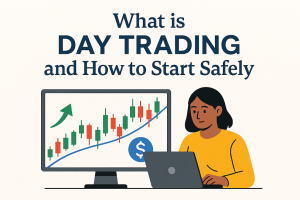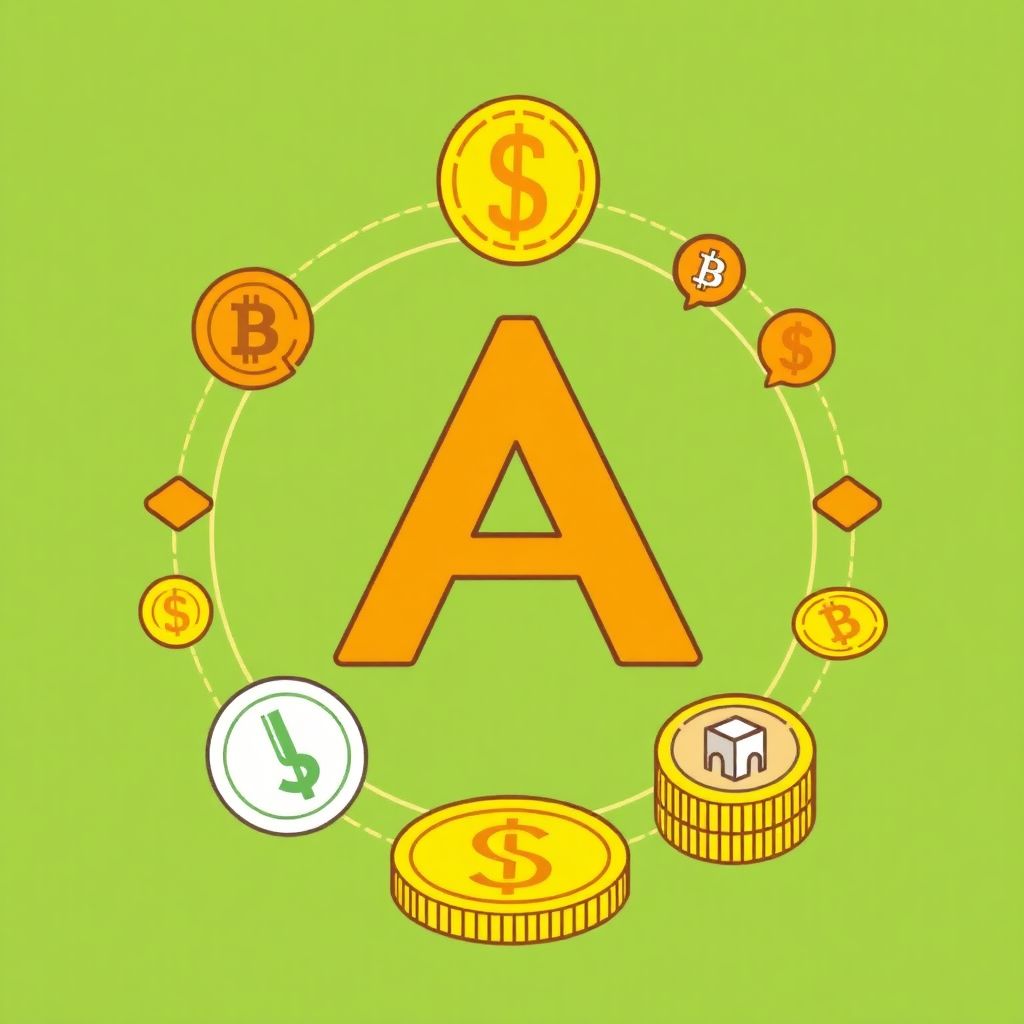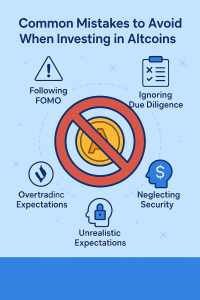If you’ve ever wondered what is Day Trading and how to start safely, this comprehensive guide is for you. With the growing interest in the stock market and the allure of quick profits, day trading has become a popular alternative for those looking to trade in financial markets actively. However, while it may seem simple, successful day trading requires education, discipline, and, above all, risk management. In this article, you’ll discover everything you need to start day trading with confidence and responsibility.
We’ll cover what day trading is, how it works, and—most importantly—how to get started with practical, safe strategies. You’ll learn how to build a strong foundation, select platforms, apply effective techniques, and protect your capital from common pitfalls. Whether you’re just starting or looking to improve your trading performance, this article will provide real value.
Understanding What Day Trading Is
Day trading is a trading strategy where financial instruments—such as stocks, options, futures, or forex—are bought and sold within the same trading day. That means traders close all positions before the market closes, avoiding overnight risks. Day traders seek to profit from small price movements during the day using technical analysis, news events, and market sentiment.
Unlike long-term investing, day trading requires an active and analytical profile. Traders must stay focused during market hours and be ready to act fast. Learning what is Day Trading and how to start safely means understanding how the market behaves and building your decisions on data and discipline, not emotion or luck.
Why Day Trading Attracts So Many People
The appeal of day trading lies in the potential for fast profits. Unlike traditional investing, where gains accumulate over years, day traders can make (or lose) money in a matter of minutes. With advanced trading platforms and the flexibility to work from anywhere, more people are exploring day trading as a source of income or side hustle.
However, many traders also lose money due to poor preparation or lack of strategy. That’s why anyone interested in what is Day Trading and how to start safely must understand that consistent profitability takes time, effort, and structured learning.
How to Start Day Trading Safely and Responsibly
To begin day trading the right way, your first investment should be in education. Study technical analysis, price action, chart patterns, and trading psychology. There are great online courses, YouTube channels, and books specifically tailored for U.S. markets.
- Practice with a demo account: Simulate real trades without risking money. Platforms like Thinkorswim (TD Ameritrade) or TradingView offer paper trading modes.
- Choose a reliable broker: U.S.-based brokers such as Interactive Brokers, Charles Schwab, and Fidelity offer advanced tools and strong regulatory oversight.
- Use a powerful trading platform: Platforms like MetaTrader, NinjaTrader, or TradeStation provide real-time data and analysis tools for precision trading.
- Start with safe capital: Use money you can afford to lose. Never borrow to trade or use funds meant for essential living expenses.
These are key steps for those learning what is Day Trading and how to start safely without falling into avoidable traps.
Effective Strategies to Trade More Safely
Even with the best tools, your success as a day trader depends on your strategy and discipline. Here are proven methods used by professional traders:
- Scalping: Multiple quick trades for small profits based on minor price movements.
- Pullback trading: Buying on temporary drops in uptrends or selling short on rallies in downtrends.
- Breakout trading: Entering trades when the price breaks above resistance or below support with increased volume.
- Risk management: Never risk more than 1-2% of your total capital per trade. Always use stop-loss orders.
Set daily profit and loss limits. Know when to stop trading—whether you’ve hit your goals or are having a losing day. The ability to walk away is a hallmark of professional trading.
The Emotional Side of Day Trading
Understanding what is Day Trading and how to start safely includes mastering your emotions. Fear, greed, and frustration can sabotage even the best technical setups. Many traders fail not because of poor strategy, but because they can’t control their impulses.
- Keep a trading journal: Track all trades, wins, losses, and thoughts. Review regularly to identify patterns and improve.
- Use mindfulness techniques: Deep breathing and short breaks help manage stress and maintain focus.
- Create a consistent routine: Trade during set hours, eat healthy, and maintain a balance between life and trading.
The better you know yourself, the more confident and composed you’ll be in live market conditions.
Common Beginner Mistakes and How to Avoid Them
New traders often repeat the same mistakes. Here’s what to watch out for when starting your day trading journey:
- Overleveraging: Using margin or excessive position sizes can wipe out your account quickly.
- No trading plan: Trading without a defined strategy and rules leads to random outcomes.
- Overtrading: Too many trades in a single day can reduce your focus and increase costs.
- Ignoring risk management: Not using stop-losses or risking large portions of your capital is dangerous.
If you truly want to understand what is Day Trading and how to start safely, avoiding these common errors is essential to preserving your capital and growing your skills.
Practical Tips to Grow as a Day Trader
Successful trading is a marathon, not a sprint. Here are actionable tips to improve your performance consistently:
- Join trading communities: Reddit, Discord, and Twitter have groups where traders share strategies and insights.
- Study charts daily: Even if you don’t trade, analyzing price movements sharpens your instincts.
- Keep learning: Attend webinars, read market news, and stay updated with economic events.
- Watch economic calendars: Websites like Investing.com or Forex Factory provide key data releases that influence markets.
Consistency and adaptability are the keys to staying profitable over time.
Tools and Resources Every New Trader Should Know
Technology can be a trader’s best ally. Here are some essential tools to enhance your trading process:
- TradingView: Excellent for chart analysis and backtesting strategies.
- Thinkorswim (TD Ameritrade): Offers powerful analysis tools and paper trading for free.
- Trade Ideas: An AI-powered scanner that helps spot trade opportunities in real time.
- Simulators: Use them to test your strategies in real-time conditions without risking money.
These tools will help you develop the skills to understand what is Day Trading and how to start safely in the U.S. market environment.
Conclusion: Day Trading Safely Is Possible with the Right Approach
Day trading can be rewarding, but it’s not a get-rich-quick scheme. By understanding what is Day Trading and how to start safely, you give yourself a competitive edge. Combine education, practice, strategy, and discipline, and you’ll be on your way to becoming a consistent and confident trader.
Have you tried day trading before? What challenges did you face, or what strategies worked best for you? Share your experiences or questions in the comments below!
FAQ – Frequently Asked Questions
1. Can you make a living from day trading?
Yes, but it requires experience, discipline, capital, and a consistent strategy. Most beginners lose money initially.
2. How much money do I need to day trade in the U.S.?
To avoid restrictions under the Pattern Day Trader Rule, you need at least $25,000 in your trading account if you make four or more day trades in five days.
3. What are the best markets for day trading?
Highly liquid markets like U.S. equities, futures (ES, NQ), forex, and crypto (on regulated platforms).
4. Is day trading legal in the U.S.?
Yes, day trading is legal and regulated by FINRA and the SEC. Traders must comply with all margin and reporting rules.
5. Do I have to pay taxes on day trading profits?
Yes. Day trading profits are subject to short-term capital gains taxes and must be reported annually to the IRS.
6. What is the Pattern Day Trader Rule?
It’s a FINRA rule that requires traders with less than $25,000 in equity to limit the number of day trades. Exceeding it can lead to account restrictions.
If you’re looking for a powerful ChatGPT alternative with advanced tools for content creation and research, check out HIX.AI Chat — the best AI assistant for serious creators!




















